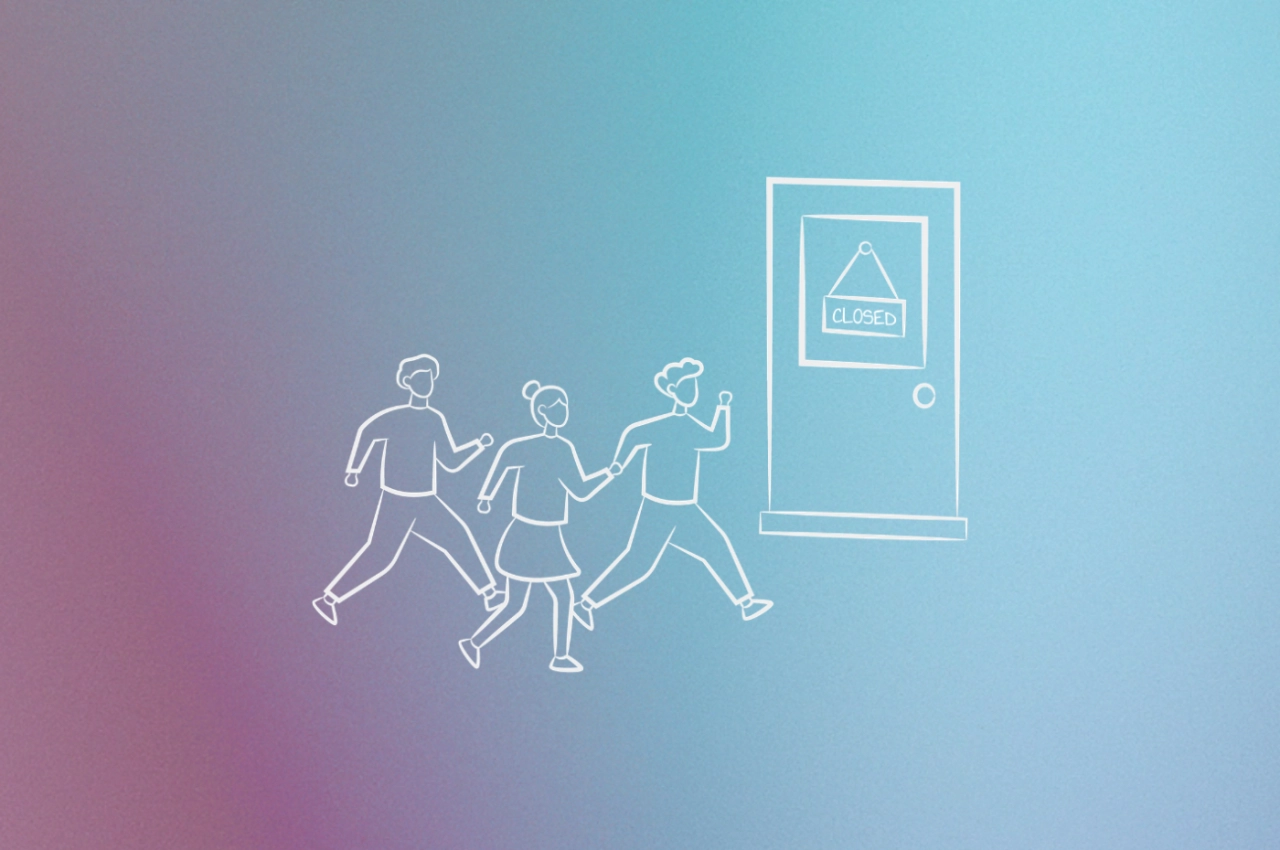- Measuring customer satisfaction isn’t optional for growing agencies—it transforms gut feelings into data-driven decisions that directly impact their bottom line.
- The most effective satisfaction measurement combines multiple methods (surveys, social listening, live chat) with the right metrics (NPS, CSAT, CES) to create a comprehensive view of the client experience.
- Modern satisfaction tools eliminate manual work while providing AI-powered insights that help you spot trends before they become problems and identify exactly where to invest resources.
Managing clients doesn’t just come down to answering their questions like a robot. You need to know their needs and anticipate potential issues. You’ll be rewarded with loyal customers who’ll stay with you for a long time.
In order to achieve that, you need to know how to measure customer satisfaction. And for that, there are many metrics to track, and a dozen of things to keep in mind.
Importance of measuring customer satisfaction
In a crowded agency world, customer satisfaction isn’t just a feel-good metric—it's a growth engine. Agencies that systematically track satisfaction gain actionable intelligence that directly impacts their bottom line.
When you measure satisfaction consistently, you transform gut feelings into data-driven decisions. This strategic approach allows you to spot trends before they become problems and identify opportunities before competitors do. Agencies excelling at satisfaction measurement often win more referrals and can command premium pricing based on proven client outcomes.
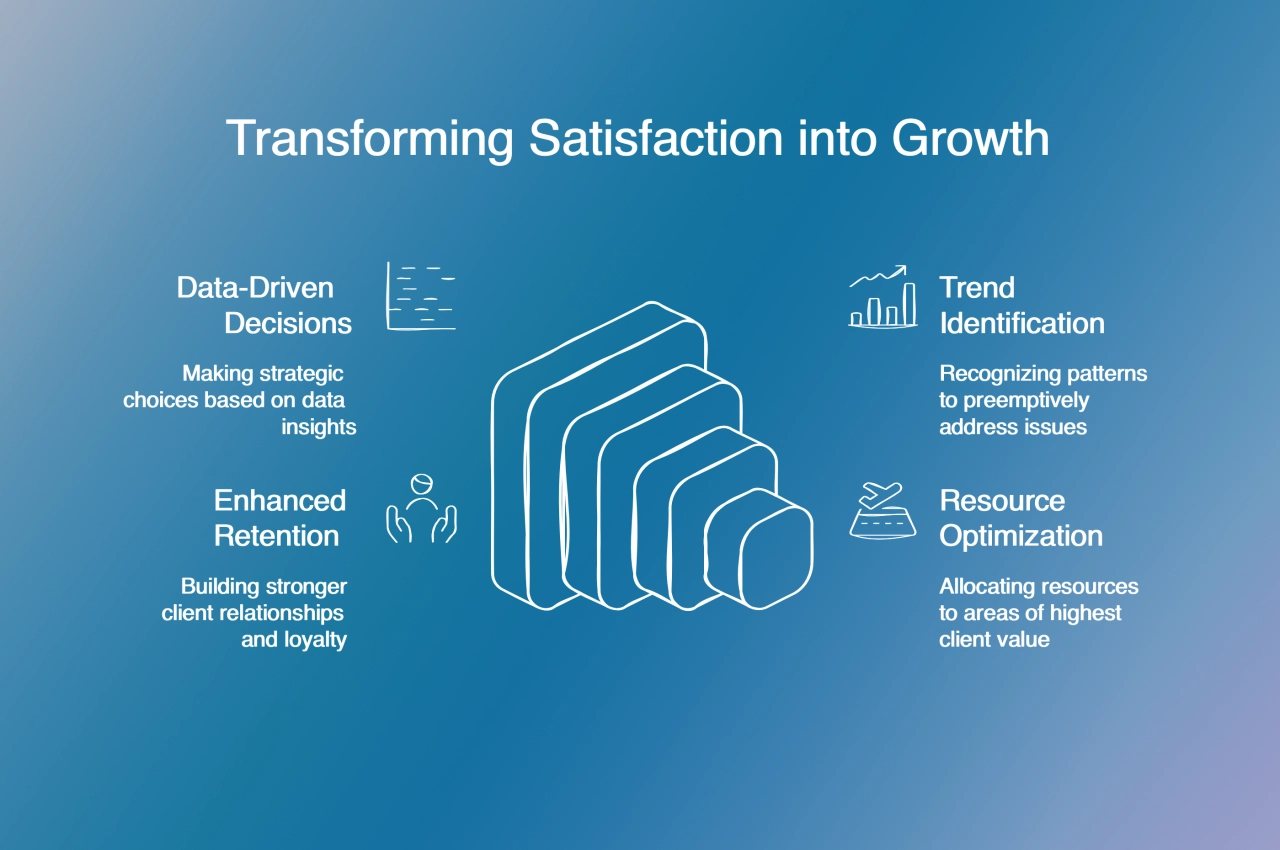
The link between satisfaction and retention is undeniable. Bain & Company research shows that satisfied clients are five times more likely to renew contracts and four times more likely to refer new business. For agencies, where acquisition costs are high, this retention advantage translates to significantly higher profit margins.
Perhaps most importantly, satisfaction data illuminates exactly where to invest your limited resources. Instead of guessing which service improvements will drive growth, you can prioritize based on what clients actually value. This leads to more efficient operations and higher-impact service enhancements.
In an industry where everyone claims to deliver results, your satisfaction metrics become powerful differentiation points that transform happy clients into loyal advocates.
Methods of measuring customer satisfaction
Let’s look at the most effective methods to track how happy your clients are, and how you can implement them without adding hours to your already busy schedule.
Survey methods that actually work
Surveys remain the most direct way to gather customer feedback, but the days of lengthy questionnaires are over. Today’s clients expect quick, painless interactions—and if you want genuine responses, your surveys need to respect their time.
Email surveys work well for gathering in-depth feedback, especially after project completion. Keep them short (3-5 questions max) and consider using a net promotor score (NPS) question: “On a scale of 0-10, how likely are you to recommend our agency to others?” This single data point can tell you volumes about overall satisfaction.
In-app surveys within your client portal create less friction. If you’re using SPP, you can trigger these based on specific actions—like after order delivery or closing out a ticket. The best part? The responses are automatically tied to the client's profile, giving you contextual data without extra work.
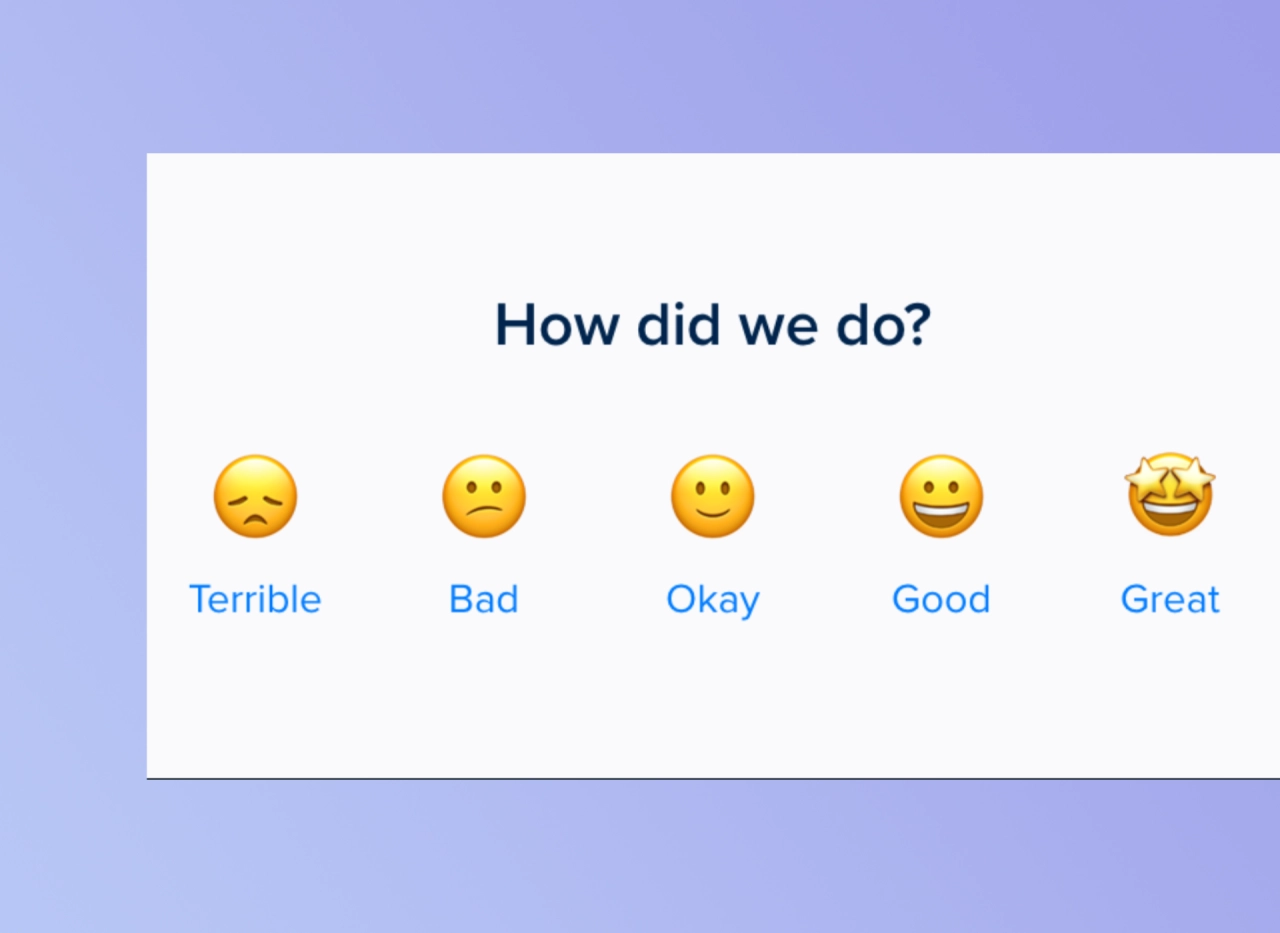
Receive ratings for your projects and tickets.
Online surveys on your website can capture feedback from casual visitors and prospects too. Just be careful with timing: a popup survey that appears 5 seconds after someone lands on your site will only irritate them.
Social media: your 24/7 satisfaction monitor
Your clients are talking about you whether you’re listening or not. Social media analytics give you access to unfiltered opinions about your agency’s performance.
Track mentions of your brand across platforms to catch both praise and criticism.
Pay special attention to:
comments on your content
direct messages requesting support
public posts tagging your business
reviews on platforms like Facebook
The beauty of social listening is that you’re gathering authentic feedback that wasn’t prompted by a survey. Clients speaking freely about their experience provide insights you might never get from formal feedback channels.
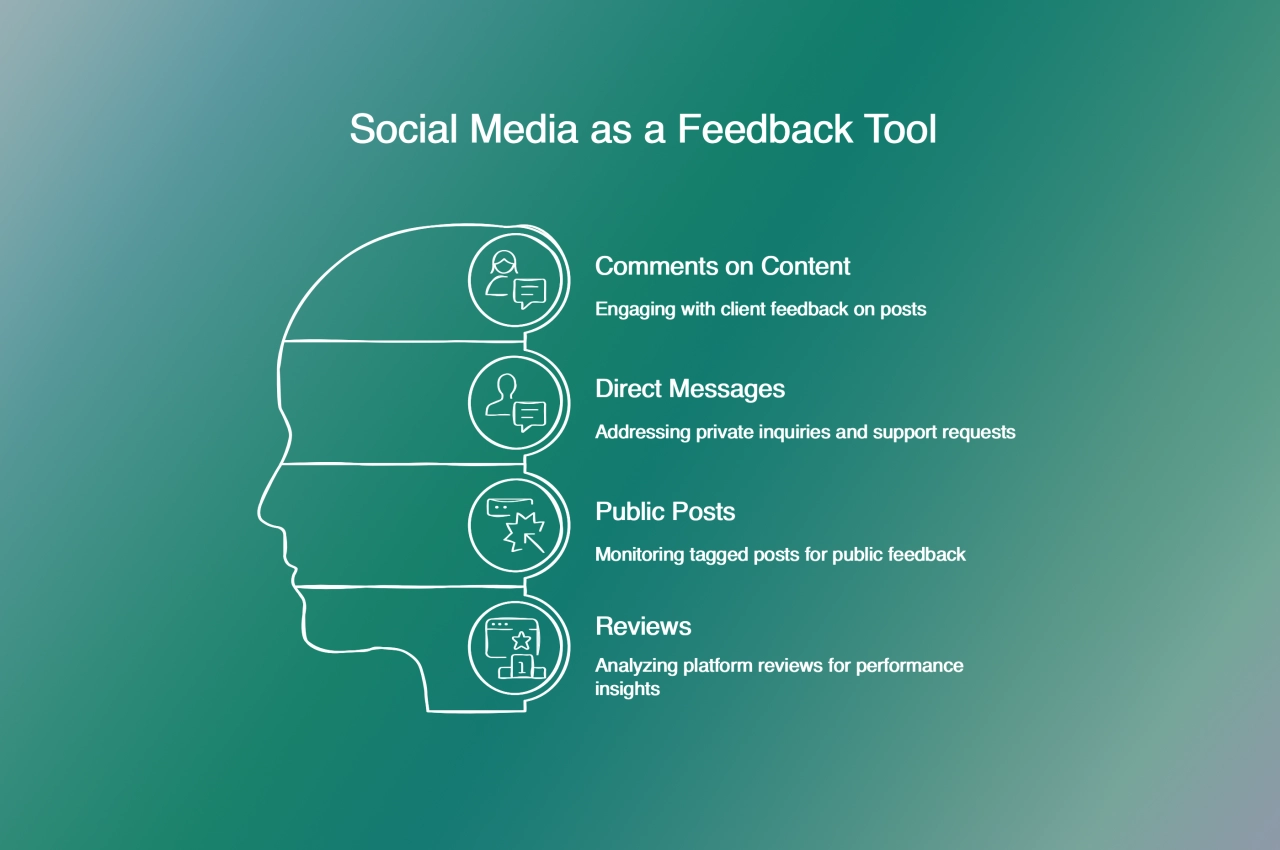
Many agencies make the mistake of only tracking positive mentions. Don’t fall into this trap—negative comments are gold mines for improvement opportunities.
Live chat: real-time feedback goldmine
If you’ve integrated live chat such as Intercom into your website or client portal, you’re sitting on a wealth of satisfaction data. Every conversation contains clues about what's working and what isn't.
In SPP, client conversations are already organized by ticket or order, making it easy to review feedback in context.
Look for:
common questions or confusions that might indicate unclear processes
response time metrics (faster is almost always better)
sentiment analysis of conversations
specific praise or complaints that come up repeatedly
Don’t just analyze the content—pay attention to volume and timing too. A sudden spike in support requests often signals an underlying issue with your service delivery.
The added benefit of live chat feedback is immediacy. Unlike surveys that measure satisfaction after the fact, chat conversations let you address concerns before they impact overall satisfaction.
10 customer satisfaction metrics to track
How do you know if your customers are satisfied with your work? Luckily, there are a few metrics to help you out.

Net Promoter Score (NPS): NPS is a widely used metric that measures customer loyalty and likelihood to recommend a company’s products or services. It involves asking customers a single question: “How likely are you to recommend us to a friend or colleague?” Responses are given on a scale of 0–10, with scores of 9–10 considered promoters, 7–8 passives, and 0–6 detractors. The final NPS is calculated by subtracting the percentage of detractors from the percentage of promoters, resulting in a score ranging from -100 to 100.
Customer Satisfaction Score (CSAT): CSAT measures customer satisfaction with a specific interaction or overall experience. It typically involves asking customers a single question, such as “How satisfied were you with your experience?” Responses are usually scored on a scale of 1–5 or 1–10, with higher scores indicating greater satisfaction.
Customer Effort Score (CES): CES measures the ease of doing business with a company, focusing on the effort required by customers to accomplish a task, such as resolving an issue or making a purchase. It involves asking customers a single question, like “How easy was it to solve your problem with our company today?” Responses are typically scored on a scale of 1–7, with lower scores indicating less effort required.
Customer Churn Rate: Customer churn rate measures the percentage of customers who stop doing business with a company over a given time period. It’s calculated by dividing the number of customers lost during a period by the total number of customers at the beginning of that period. Lower churn rates indicate better customer retention and satisfaction.
Other notable customer satisfaction metrics
In addition to the metrics discussed above, agencies should consider tracking:
First Contact Resolution (FCR): The percentage of customer issues resolved on first contact with customer support.
Average Resolution Time: The average time taken to resolve customer issues or inquiries.
Customer Lifetime Value (CLV): The total revenue a customer is expected to generate over their lifetime with a company.
Customer Retention Rate: The percentage of customers who remain with a company over a given time period.
Net Promoter Score for Detractors (NPS-D): A variation of NPS that focuses specifically on understanding and addressing the concerns of detractors.
Customer Health Score: A composite metric that combines multiple data points, such as product usage, support interactions, and survey responses, to provide an overall assessment of a customer’s relationship with a company.
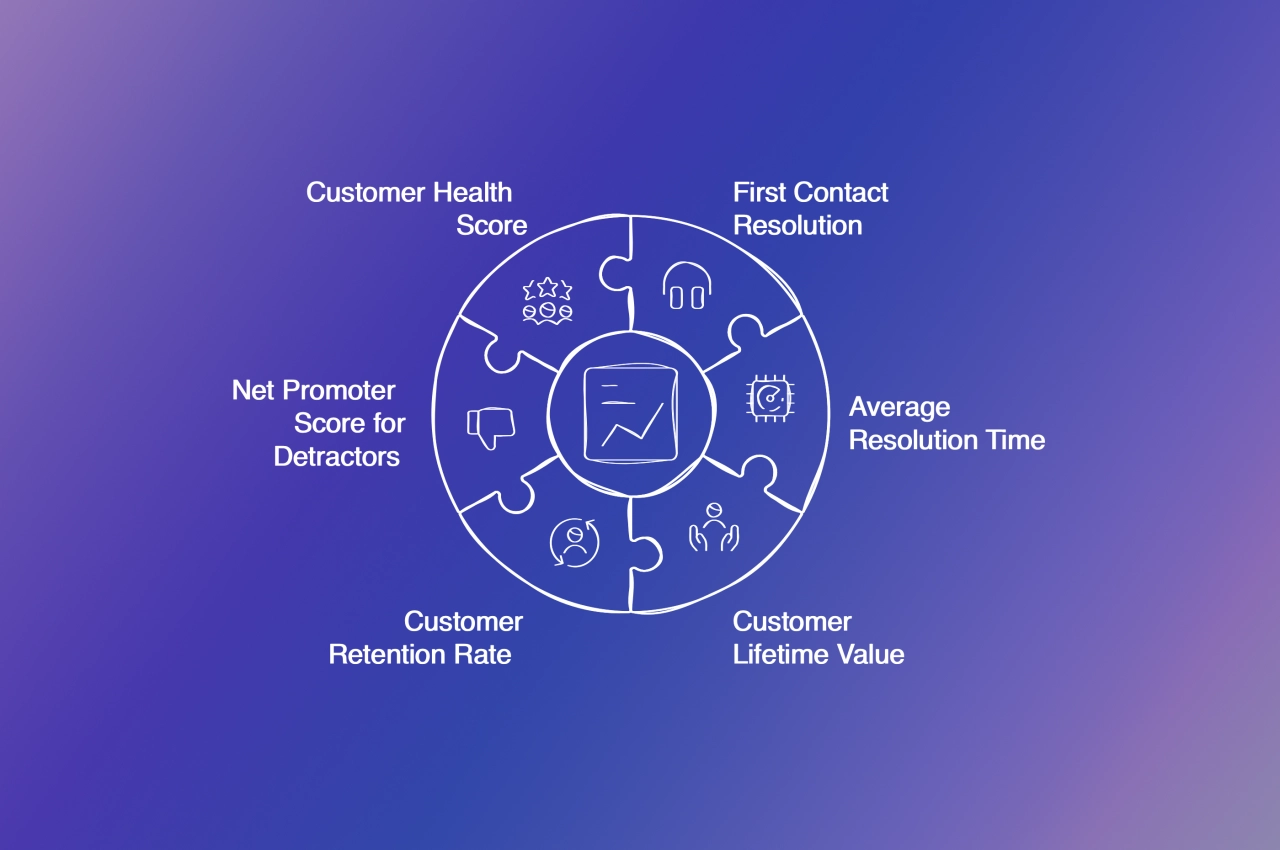
By tracking a diverse set of customer satisfaction metrics and analyzing the relationships between them, companies can gain a holistic view of the customer experience and make data-driven decisions to improve the metrics.
Understanding the 3 c’s of customer satisfaction
In order to ensure that your customers leave high ratings, let’s look at the three c’s of customer satisfaction.
Consistency: the foundation of customer satisfaction. Customers expect reliable, predictable experiences across all touch-points, from the quality of your services to the attention to details they receive. Maintaining brand standards and messaging across channels is crucial to building trust and loyalty.
Communication: clear, transparent, and timely communication is essential for customer satisfaction. Customers want to be kept informed about their orders, issues, and any changes that may impact their experience. Active listening and prompt responses to inquiries show customers that you value their feedback and care about their needs.
Customization: in today’s competitive landscape, customers expect personalized experiences tailored to their individual needs and preferences. By using customer data and insights, you can customize your offerings and interactions to create a more engaging and satisfying experience.
Making use of customer satisfaction tools
With so many ways to measure client satisfaction, choosing the right tools can feel overwhelming. The good news? Today’s satisfaction measurement platforms are more powerful and user-friendly than ever before. Let’s look at the options that make the most sense for marketing agencies trying to scale.
Advanced measurement platforms
Gone are the days when measuring customer satisfaction meant manually sending out surveys and compiling results in spreadsheets. Modern platforms offer automation, real-time feedback, and sophisticated analysis that saves your team precious hours.
Tools like SurveyMonkey, Typeform, and of course, Service Provider Pro, offer agency-specific templates that make it easy to start collecting feedback immediately.
The key features to look for include:
conditional logic that adapts questions based on previous answers
white-label options to maintain your agency branding
integrations with your existing tech stack
automated distribution based on customer journey touchpoints
real-time alerts for negative feedback that requires immediate attention
Many of these platforms now offer industry benchmarks too, so you can see how your satisfaction scores compare to similar agencies. This context is invaluable when determining if a seemingly good score (like an 8/10) is actually lagging behind your competitors.
AI for your satisfaction analysis
The most significant advancement in satisfaction measurement tools is the integration of AI. These intelligent systems can process thousands of feedback points to identify patterns human analysts might miss.
For agencies, AI-powered tools like Qualtrics and Medallia can:
analyze open-ended responses to identify sentiment and recurring themes
predict which clients are at risk of churning based on satisfaction trends
recommend the optimal timing for satisfaction surveys
automatically categorize feedback by department or service type
generate natural language summaries of complex feedback data
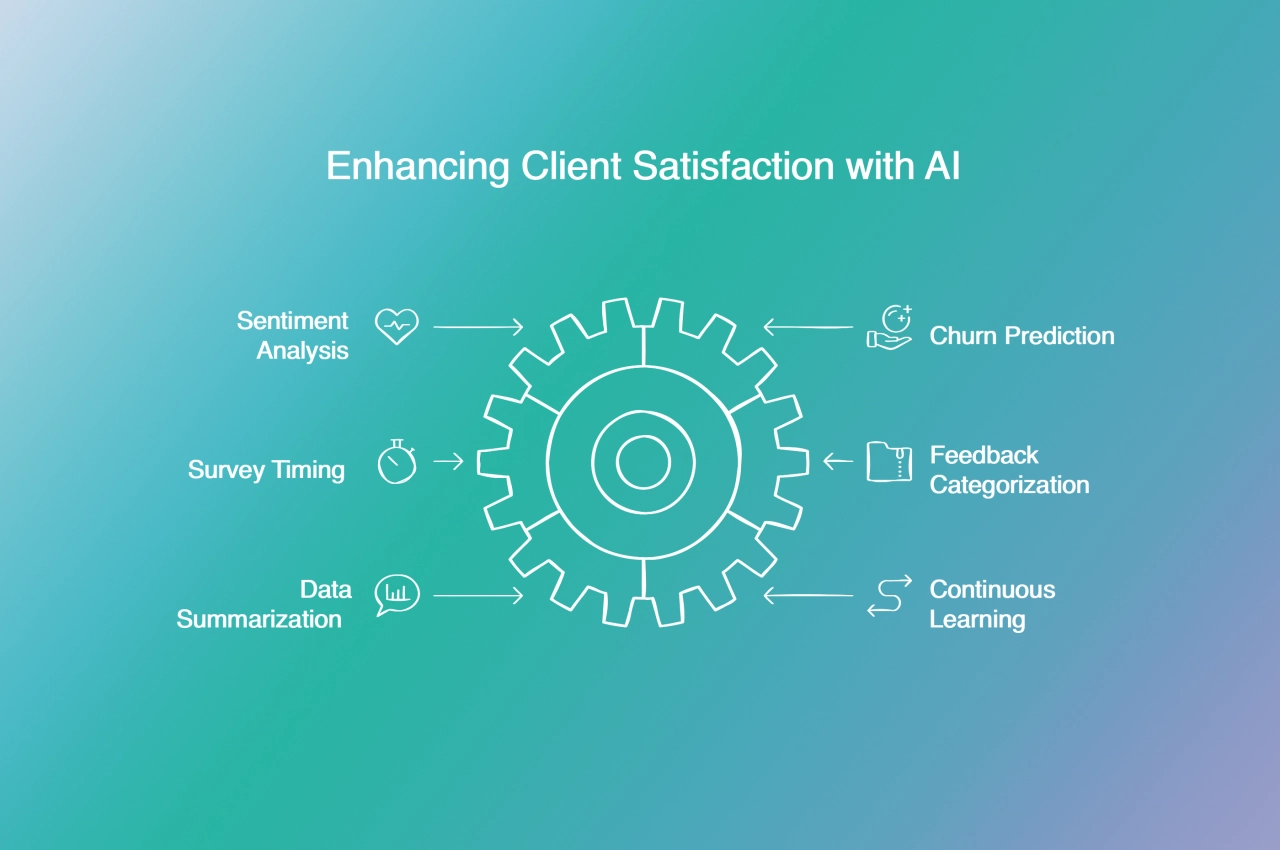
What’s particularly useful for marketing agencies is AI’s ability to correlate satisfaction data with actual campaign performance. This helps you understand whether client perception aligns with objective results—and when it doesn’t, you can address the communication gap.
When evaluating AI-powered tools, look for those that offer continuous learning capabilities. The best systems adapt to your agency’s specific client base and terminology over time, becoming more accurate with each feedback cycle.
Getting the big picture with integrated platforms
While standalone survey tools have their place, the real power comes from integrated platforms that bring all your satisfaction data into one cohesive system.
Client portals like SPP offer this integrated approach by connecting satisfaction data directly to client profiles, orders, and communication history. This creates valuable context that standalone tools simply can’t match.
Here are a few examples:
seeing satisfaction scores alongside client spending history
correlating feedback with specific team members or service types
tracking how satisfaction evolves throughout the client lifecycle
triggering automated workflows based on satisfaction thresholds
generating comprehensive reports that combine operational and satisfaction metrics
For instance, in SPP, when a client gives low satisfaction scores after project delivery, you can instantly review the entire project history, communications, and submitted assets—all in one place. This holistic view often reveals the root causes of dissatisfaction that would be invisible in isolated survey data.
Your customer satisfaction action plan
Many agencies make the mistake of adding yet another standalone tool to their tech stack when measuring satisfaction. Instead, look for opportunities to leverage the platforms you’re already using. The client portal you rely on for project management and billing might already have satisfaction measurement capabilities—or can be extended with simple integrations.
Remember, the goal isn’t just to collect data—it’s to make satisfaction measurement a seamless part of your agency operations, driving improvements across every client touchpoint.




